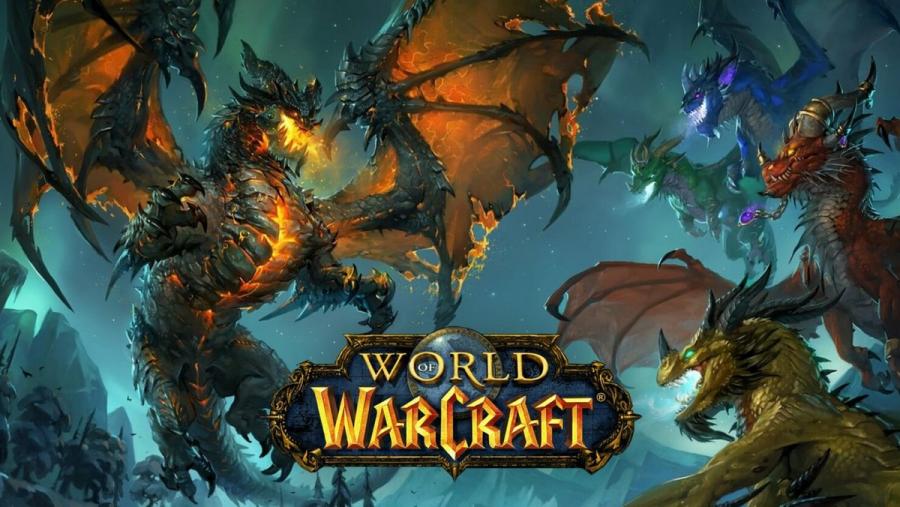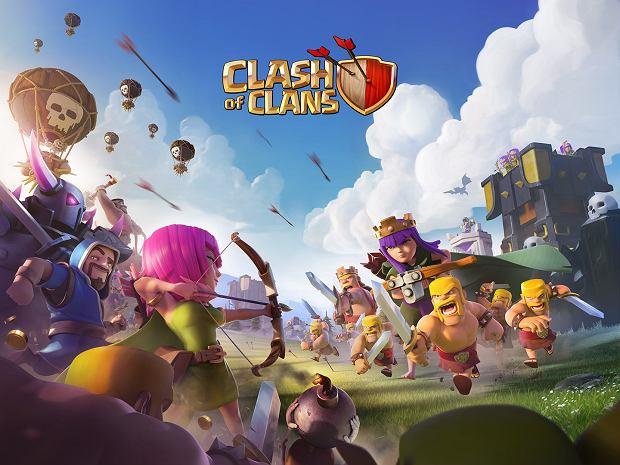
Convergence culture in the video game industry
The gaming industry is one of the fastest-growing markets globally. It connects players from all around the world and has a significant influence on popular culture. The industry that started as a subculture is now a global mass market, and games are the common good in every country (Shaw, 2010). In comparison to other forms of mass media, games industries were always using practices from the mass entertainment industry located in South California (SoCal). However, in recent years, the trend has transformed, and now some games industries use practices from pure-play internet companies located in North California (NorCal).
One of the most remarkable examples of this industrial convergence is a relatively new battle royale game, Fortnite, created by Epic Games Studio. In Fortnite, Epic Games uses both NorCal and SoCal strategies to maximize profit. Currently (2022), Fortnite is the most popular game globally. In this paper, I analyze the game industry's road since the early 2000s. I study the first example of industry convergence in a Blizzard game, World of Warcraft. Next, I explore the mobile games development system at the beginning of the 2010s to finally move to the Fortnite example and present how it uses industry convergence. I hope this paper shows how mechanisms inspired by NorCal and SoCal industries revolutionized the way players perceive 'free-to-play' games like Fortnite. Why do players decide to buy cosmetic items inside the game that do not influence a skill level? Is Fortnite a possible future of the game industry?
Academic Lenses
YouTube, Multichannel Networks, and the Accelerated Evolution of the New Screen Ecology (Cunningham et al., 2016) is a core academic knowledge source for this paper. Even though the game industry is not mentioned and analyzed in these articles, Cunningham and Craig distinguish between the SoCal and NorCal industries providing the reader with the characteristics of both. This distinction can be prescribed in the game industry.
In this paper, Cunningham and Craig describe NorCal industries as pure-play internet companies with connectedness affordances with extensive data on users' behaviors based on constant feedback (Cunningham et al., 2016). Signature products of the NorCal industry are social media platforms such as Facebook or Instagram. NorCal industry products are constantly in beta versions. Thus, there is no final product. This system gives the possibility to make updates to products. NorCal products are mediators of content. Only some aspects of products are created by the companies (Cunningham et al., 2016). In the example of Instagram, the core is other users' content, not the app itself. The last important NorCal characteristic is the form of monetization it uses. Users do not buy a product from a producer. The monetization is based on personalized commercialization based on personal feedback.
A distinction between NorCal and SoCal
SoCal's business model uses different strategies. It has its roots in Hollywood. SoCal companies characterize by producing and selling final products such as films. These industries are not a mediator of content but direct creators of it (Cunningham et al., 2016). For instance, big film industries such as Warner Bros create their content to push it forward to popular culture. The monetization in SoCal companies is a profit from sold products. It is more difficult for SoCal industries to collect feedback from users. Therefore, they have a history of traditional marketing strategies.
Usually, NorCal and SoCal companies compete with each other for consumers using their strategies. However, sometimes companies use these two strategies simultaneously in developing their products. Then, we can speak about the ‘industrial convergence’ (Cunningham & Craig, 2019). It is a term that describes a situation where SoCal industries use NorCal strategies and vice versa. Commonly, SoCal companies started to use NorCal strategies when they appeared at the beginning of the 2000s. One recent example of this hybridity is the Disney+ platform. It has its roots in the traditional SoCal Walt Disney industry and uses NorCal strategies in development. (van Dijck, 2021) This interrelation works another way as well. NorCal corporations use SoCal plans in the form of monetization, for example. Spotify is a typical pure-play internet platform for listening to music. However, it uses SoCal strategies in the form of premium accounts that give users more possibilities for listening and turning off commercials. Knowing the distinction and correlation between NorCal and SoCal, I can move to the example of the game industry.
World of Warcraft

World of Warcraft
Since the beginning of its existence, the game industry has had a SoCal industry culture. Games were premium content available only for those who bought them. Some aspects changed with the development of the global network. Some industries started to use NorCal strategies to maximize their profit from game revenue. A great example of this process is now considered a classic game, World of Warcraft. Blizzard Entertainment launched this game in 2004, and it immediately became a bestseller. It is an MMORPG (massively-multiplayer online role-playing game), which means that gamers play on enormous servers for 20 thousand people. WoW is a fantasy game where players develop their avatars by performing quests. In 2006 it was the most popular game in the USA with almost 6,5 million active players.
WoW has a SoCal strategy that makes it stands out from other online games (Nardi & Harris, 2006). The game is free to download and play to some extent (until the player reaches level 20). Afterward, players have to sign up for a monthly subscription to play further. The cost of a subscription is 15 dollars (15 euros + VAT in Europe). This subscription is a typical SoCal model of premium content and elitism among players. However, it differs from the standard structure where players buy a game and consequently, they have their copy of it. This process influenced the present system of game subscriptions (game passes which I introduce in the following paragraph). It also impacted the structure of subscriptions in typical NorCal apps such as Spotify or Netflix (Cunningham et al., 2016). The popularity of Warcraft was a suggestion of how profitable the subscription system is.
A SuperCell game

Clash of Clans
With the development of smartphones, the structure of games has changed. With the age of smartphones came free-to-play games. From the 2010s, games were available for everyone with decent-working smartphones and internet access. The question is whether these games are still SoCal products or not. The answer is yes and no. They have characteristics of both SoCal and NorCal industrial cultures. Mobile games are a great example of how industrial convergence works. I will present these characteristics on a popular mobile game from SuperCell studio, Clash Royale. Clash Royale is a mobile card and tower defense game where players compete with each other and collect trophies.
The first feature that would suggest that this is a NorCal product is that it is free to download, just like social media. Another aspect is that the game is still receiving new updates, which means it is in constant beta version and seeks better (Cunningham et al., 2016). Also, the updates in a game are a response to players’ feedback, which is typically NorCal's industrial culture characteristic. However, there are a lot of features that would suggest that Clash Royale is a SoCal industry product. The most distinctive is the pay-to-win mechanism. Pay-to-win term means that it is possible to play a game without any extra expenses, but it is demanding, and there are fewer chances of winning. There is premium content in the game available only for players with a paid subscription. Clash Royale has a standard mobile game structure. It is a NorCal culture industry product with the SoCal technique. It is a consequence of mobile games being from the same background as social media apps. It has its roots in North California. However, the following example is a game that originated in the SoCal industry as a PC game and still preaches a NorCal model.
The Fortnite revolution
In 2017, Epic Games Studio released a game that revolutionized the game industry and irrevocably changed the system. Fortnite appeared as early access and quickly became the most popular game globally. It is a battle royale game which means that 100 players compete with each other on one server. The last player or team alive wins the match. What distinguishes this game from other shooters is a system of constructions. Players can build walls, stairs, and other forms of construction to make a cover from enemies. Consequently, every game flows a bit differently. Epic Games Studio used strategies of other games I mentioned before as World of Warcraft. Fortnite, just like mobile games, uses a model of convergence culture to maximize its profits. It is the first popular PC game that uses NorCal and SoCal strategies to a meaningful extent.

Peely character from fortnite
The first remarkable NorCal characteristic is that Fortnite is a free-to-play game. Everyone with sufficient system requirements can download and play it. Every player can access all game modes. However, there is content in a game available only for players with a battle pass. The battle pass is a subscription that players need to renew each time the new season start in Fortnite (every 2-3 months). Technically, players can buy a battle pass with Fortnite’s currency, the v-bucks, though it means spending a lot of time playing. Players can buy v-bucks for ‘real bucks.’ Therefore, Epic Games earned around 50 million dollars on the inauguration of the season 3 pass on February 22, 2018 (Valentine, 2018). It is a classic example of premium content in a free product. However, in comparison to Clash Royale, the battle pass is not a pay-to-win service. All that players receive by buying it are cosmetics for their avatars. Owning costumes for avatars and weapons is a symbol of social fame (D’Anastasio, 2018). Consequently, Fortnite generated 5.1 billion dollars in revenue in 2020 and even more in 2021 (Knight, 2021).
Not only is the system of a game mixed with SoCal and NorCal strategies, but the content of the game is as well. As I mentioned before, SoCal culture industries create their products, while NorCal culture industries act more as mediators of content (source). In Fortnite, players can find both of these content strategies. At the beginning of 2017, Fortnite only had its original characters and objects. One of the most recognizable characters is Peely, a person in a banana suit.
However, with a rise in its popularity, Fortnite afforded to add popular themes and characters from mass culture inside the game. One of the most spectacular introductions happened in August 2020 when Epic Games added Marvel Universe characters to the game (Webster, 2020). Players (with the Battle Passes) could play as Thor or Wolverine. Currently, the library of themes and universes is enormous, and with each season, Epic Games gives players more. But Fortnite is more than a game now. It is a lifestyle. There is a virtual space inside Fortnite called "Party Royale". Players enter this unique server to spend time with friends. On February 2, 2019, the first digital concert happened in Fortnite. A famous DJ, Marshmellow, played a live-concert in-game for around 10 million players (Frushticks, 2018). This example illustrates how Fortnite is not only a content creator but also a content provider, which suggests its convergence nature.
Conclusion
The game industry launched as an absolute SoCal example of the culture industry. Games were a premium product available only for people who bought them. Some traditional games, such as World of Warcraft, used SoCal strategies like subscriptions that later were introduced again in NorCal products. With the rise of the NorCal came the age of mobile games that were in large part for free. However, some of the games, such as Clash Royale, were using SoCal strategies in form of premium content inside the game. A few years later Fortnite revolutionized the game industry by becoming the first mass-popular NorCal game with SoCal background and monetization system. The success of Fortnite suggests how profitable an industry convergence is in the game industry.
The Fortnite revolution changed the way players perceive 'free-to-play' games. Buying products inside a game, which is the SoCal mechanism of premium content, does not consequence in-game progress (as it was with Clash of Clans and World of Warcraft). Players decide to buy premium content because it becomes part of their image or even identity. As a futurist Theo Priestley wrote in the book The Future Starts Now: "[Fortnite] is not a game anymore. It is a universe where players shop, play, fight and rock out to concerts" (Priestley, 2021). The main consequence of using convergence culture in Fortnite is an evolution from a computer game to a lifestyle. It is a virtual space where users not only gather for solving quests, but it is a public space and possibly the future of the game industry. Fortnite has forever changed the game market, using both types of industrial cultures.
References
Cunningham, S., Craig, D. & Silver, J. (2016). YouTube, Multichannel Networks and the Accelerated Evolution of the New Screen Ecology. Convergence: The International Journal of Research into New Media, 22(4), 376-391.
Cunningham, S. & Craig, D. (2019). Social media entertainment: The New Intersection of Hollywood and Silicon Valley. New York University Press.
D’Anastasio, C. (2018, June 21). Battle Passes Are So Hot Right Now. Kotaku.
Frushtick, R. (2019, February 2). Watch the full Marshmello Fortnite concert here. Polygon.
Knight, K. (2021, May 4). How Much Money Does Fortnite Make? – 2020 Revenue Revealed. Elecspo.
Nardi, B., & Harris, J. (2006). Strangers and friends: collaborative play in world of warcraft. In Proceedings of the 2006 20th anniversary conference on Computer supported cooperative work (CSCW '06). Association for Computing Machinery, New York, NY, USA, 149–158.
Newzoo. (2022, June 2). Most Popular PC Games - Global.
Priestley, T., & Williams, B. (2021). Future Starts Now, The: Expert Insights into the Future of Business, Technology and Society. Bloomsbury Business.
Shaw, A. (2010). What Is Video Game Culture? Cultural Studies and Game Studies. Games and Culture, 5(4), 403–424.
Valentine, R. (2018, May 25). Fortnite sold 5 million battle passes on the first day of Season 3. GamesIndustry.Biz.
van Dijck, M. (2021, September 24). How Disney+ is Changing the Streaming Industry through Industrial Convergence. Diggit Magazine.
Webster, A. (2020, August 27). Fortnite Chapter 2: Season 4 pits Marvel’s biggest heroes against Galactus. The Verge.